
Roy Hargrove leads his RH Factor on Sunday at the DC Jazz Festival's National Mall concert. Carlyle V. Smith/CapitalBop
NPR’s Patrick Jarenwattananon and I spent a lazy afternoon on the National Mall last Sunday, taking in the DC Jazz Festival’s main event. The free, day-long Jazz on the National Mall concert featured five bandleaders representing four countries, and the decidedly global array drew enthusiasm from the audience — which was filled with a wide variety of folks, but had a heavy dose of couples with children.
I reconnoitered with Patrick, who curates A Blog Supreme at nprmusic.org, to banter a bit about the show, as well as the DC Jazz Fest in general. I tried my best to put my own role in the festival aside during this discussion, which we had over internet chat and is also cross-posted at Patrick’s blog.
A Blog Supreme: I was just thinking how sitting all day in the sun is really tiring. We’re really working in the coal mines with this jazz journalism thing.
CapitalBop: Ah yes. Never seen so many people willingly spend their off days in a coal mine, though.
ABS: Is it that sticky-swampy hot in coal mines?
CB: Nothing’s as sticky-swampy hot as D.C. in August. And this felt exactly like August.
ABS: Well, we were out for about seven hours in it. The brief rain delay cooled things off, blessedly — I don’t know if I would have made it to Eddie Palmieri had it not been for some fortuitous meteorological intervention. But I’m glad I stayed: Palmieri’s set, although weather-shortened, was great.
CB: Definitely. It was funny — the sun was going down and then Eddie got people sweating again, dancing all over the place. It was by far the most engaged I’d seen the audience all day, I think, which was surprising after a full day of jazz. Or, “jazz.”
ABS: Yea, I agree. A lot of the other acts brought tons of energy, but nobody got people to get their dance on like top-notch, straight-from-the-source Afro-Latin jazz. Plus, the best tres guitar player I’ve ever seen.
CB: Right. Amazing, subtle innovators, too. Palmieri has got this Monkish Latin jazz touch to his playing that you don’t really hear anywhere else — at least not on stuff that’s strictly classifiable “Latin jazz” like this was.
ABS: As I recall the lineup, you might be on to something with your scare quotes for “jazz.” The lineup was pretty diverse, but it doesn’t feature what DC’s scene is known best for: straight-ahead swing.
CB: Nope. I thought this lineup lined up perfectly with the image of jazz put forth in the new Smithsonian Anthology. That is, that it’s the world’s music, an instrument or a tool for expression that can be applied to traditions across the globe. Which is obviously a tremendous thing. It’s sort of like, “We’ve hit upon this rubric, this particular blend of composition and improvisation and communal thinking, and it really can catch on anywhere.”
ABS: I think the best example of that came in Claudia Acuna’s set. You know, she’s originally from Chile, but she had top-notch New York jazz players behind her — Daniel Freedman on drums, Mark Kelley on electric bass, Marc Cary (DC native) subbing on keys. What came out wasn’t exactly Latin jazz like Eddie Palmieri, but it had lots of musicianship, lots of feeling. Plus, she had the Venezuelan guitarist Juancho Herrera, who filled out that studied-but-folkloric approach she has to South American songs and rhythms.
CB: Exactly. What it didn’t have as much of were the typical trappings of the North American jazz tradition. You talked about it having a real folk element to it, and I think that’s the centripetal force of her music. Its pulse is very much Chilean folk. It was fantastic, and her voice is almost unbelievably rich. I thought she gave both the jazz standards and South American folk songs some very personal readings.
ABS: Agreed. Kinda husky and dark — it’s got some character.
CB: What did you think of Roy Hargrove’s set, rain-shortened as it was?
ABS: See, there was another jazz-trained musician leading a band (presumably of other largely jazz-trained musicians) which didn’t make jazz music. It came from the same common jazz ancestor for sure, but his RH Factor band is more dedicated to a certain sultry, electrified funk. (There were three keyboard players!)
CB: Right! So maybe that proves the day wasn’t just about showing the different ways that jazz adheres around the world –- but also about how well it can intermingle with other genres in this continent. Music doesn’t need to be bundled and separated. Then again, it would have been nice to hear some jazz.
ABS: Right. And this wasn’t really “jazz-funk” as it was defined in the early ’70s — more funk, funk.
CB: The best wedding band you’ve ever heard, maybe.
ABS: They definitely closed the joint down with some Parliament, “Give up the Funk.” Roy doing a little singing, you know.
CB: Yea, not that much trumpet playing, though.
ABS: When he did play, you could see that he’s got mad skills … but a bit of space and groove and laying out, sure.
CB: No arguing with that! It was Roy Hargrove. Always good to see the master.
ABS: I had to laugh when DC Jazz Fest founder Charlie Fishman came on stage and had Roy take a curtain call. Roy is a regular of this event.
CB: Right. Roy is a member of the Dizzy Gillespie All-Stars Big Band, and Fishman is Gillespie’s old road manager. So there’s some history there.
ABS: Charlie recently told me he had “two B.A.s from the University of Dizzy Gillespie.” So Dizzy’s legacy is the entire festival’s M.O. and point of entry for sure. Overall, I would have liked to have seen more jazz music that comes from other subcommunities too, although I won’t argue with Cyrus Chestnut and Yotam Silberstein and (Dizzy’s long-time musical director) John Lee supporting the Heath Brothers, as I saw on Friday.
CB: That’s the thing. There were plenty of usual suspects throughout the festival, but we have also been talking about how varied the music was on the Mall today. I think the most important thing is that it did have a sort of variety, but most of the programming was aimed at an older demographic, a relatively traditional “jazz audience” for this era.
ABS: I imagine this big free concert on the mall day (almost literally in the shadow of the Washington Monument) was designed to be family friendly. Lots of high-energy, dynamic performances. Frederic Yonnet was certainly one of those …
CB: Yea, you’re spot-on. Yonnet’s set was one that definitely got the crowd engaged. (When this tall, handsome French dude wearing all white down to his shoes sprints into the audience and starts playing harmonica in your face, I think it’s hard not to feel involved.)
ABS: He went off stage into the crowd three times with his harmonica and a wireless mic. The second time he had his electric bass player come out too. (Wireless transmission there, too, it would seem.)
CB: God I hope we can get a picture of that moment to put up.
ABS: See, Yonnet is an act I feel like a total snob about. Dude is clearly very, very good at his instrument. The crowd definitely dug it. But that whole kinda-smooth, kinda jammy, kinda blues-rock vibe to it: not feeling it.
CB: It was just too smooth for me. Practically everyone else seemed to be loving it.
ABS: Another DC Jazz Fest repeat act, as he himself announced: “This time they upgraded us to a real stage.”
CB: I guess the National Mall beats a hotel lobby. At least, it’s not very appropriate there to jam with your bass player from atop chairs.
ABS: Depends how drunk and/or politically connected you are in this town.
CB: It’s awful how right you are. Jazz in hotel lobbies — and jazz clubs, and restaurants, and theaters: It’s a big part of this festival, actually. And this is where we get into territory where I need some full disclosure: My website, CapitalBop, organized a series of four jazz loft shows as part of the DC Jazz Festival this year. We didn’t make money from it, but that definitely makes me friends and colleagues with plenty of folks at the festival.
ABS: Right. All noted. Which I think gives you some access to how all this works, no?
CB: Sure. But Patrick, you know way better than I do: Is there anything quite like the DC Jazz Festival, in all its 13-day-long, citywide sprawl?
ABS: Well, there are other urban jazz festivals that stretch out for over 13 days or so. I think you’d agree, Gio, that the DC Jazz Fest is something of a paper tiger that way. I’m talking mainly about “Jazz In The Hoods.” You understand this phenomenon, of course, since you were part of it.
CB: Yea, I guess I do. What’s for sure is, the DCJF lends its name to a lot of things that would be there regardless — with or without the festival. The way I understand it, for those willing to participate, any club or eatery or gallery or pet food store that’s hosting jazz anyway can just sign up to be a part of the festival. So they get to be in the brochures [under “Jazz in the ‘Hoods”] and reach a particular jazz-seeking audience that way.
Granted, this whole setup does incite some venues to host jazz when they normally wouldn’t, or just to host more of it. I was just hanging out with a few musicians outside Bohemian Caverns after the Mall show, and these past two weeks have been very kind to them.
ABS: Yea, the festival billing definitely brought people out to things they wouldn’t usually see. Bohemian Caverns itself came out ahead too. It’s my favorite jazz venue in town, but it’s usually only a 3-5 night-a-week spot. There was good music there every night of the festival, for packed houses.
CB: Exactly. Without the festival focusing people’s attention on the scene, it’s hard for Bohemian — even with its coronation as the “best jazz club in town” by the local alt-weekly — to draw a strong audience every night, usually.
ABS: Of course, it’s curious that Blues Alley and HR-57 — two of the four biggest jazz rooms in town — didn’t participate in Jazz in the ‘Hoods. I won’t speculate as to the nature of their relationship with DC Jazz Festival, but I do imagine that the idea of being shoehorned into the DC Jazz Festival doesn’t jibe well with every club owner. Anyway, that brings us back to the few events that DC Jazz Festival did directly produce. This afternoon-long free concert was certainly one of them.
CB: Right. Bobby McFerrin’s concert at the Warner Theatre was the other major DCJF production this year. I wasn’t able to attend, unfortunately.
ABS: Me neither — it was with the Howard University Afro Blue jazz choir too.
CB: I heard only great things about that show — apparently his energy meshed beautifully with the choir.
ABS: There are also free concerts at the Phillips Collection, an art gallery. And there was a closing event held at the Kennedy Center — the musical revue of New Orleans, inspired by the HBO program Treme. Which reminds me:
So as much as we, or at least I, might comment about this whole open secret about DC Jazz Fest, it’s not an easy task to put on improvised music anywhere, as we know. And on Sunday, they managed to put five bands from around the world — you know, we haven’t even mentioned West African bandleader Toby Foyeh — and draw multiple thousands over the course of the afternoon? I’m bad with estimating numbers.
CB: I’m assuming that by open secret, you mean the way that Jazz in the Hoods works. But yea, as far as the entirely DCJF-run National Mall show today, it was great to see such enthusiasm from the audience, let alone those onstage who seemed to be bringin’ it. I’m sure you’re right to put the number in the thousands, and what was amazing was how many people actually came back after the rain delay.
I mean, we’re not even talking about just any quick, “We have to take a little break” kind of delay. The park actually forced everyone to leave. Never heard of any situation in which the venue asks people to leave entirely and come back. But somehow, they did — faithfully soldiering back for Hargrove and Palmieri.
ABS: The National Park Service, which administers the entire National Mall, asserted its authority — with good reason, with cloud-to-ground lightning scarily close. But indeed, the music was too electric to resist.
CB: Can’t argue with that, man. Something really “struck” them about the concert, I guess.
ABS: I think now everybody is wishing we were struck by lightning.

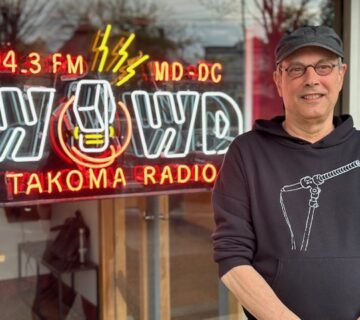
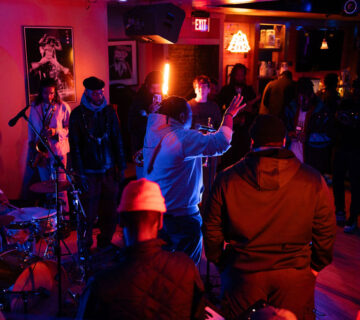
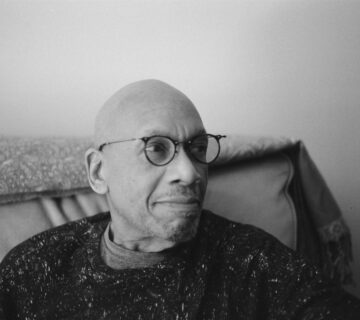
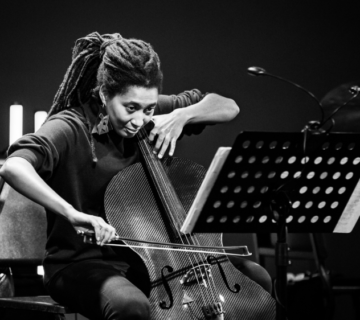
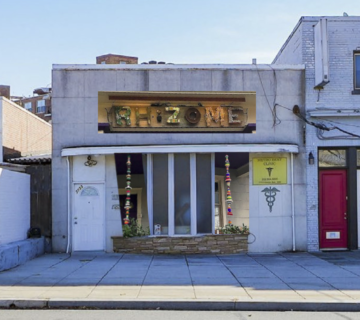
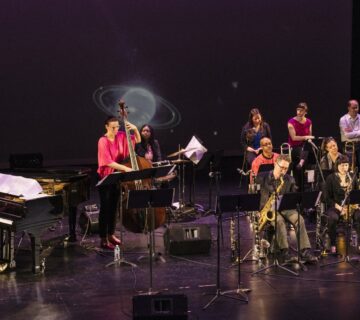
[…] Live review | Jazz on the National Mall: Chatting with NPR's jazz … It came from the same common jazz ancestor for sure, but his RH Factor band is more dedicated to a certain sultry electrified funk. (There were three keyboard players!) CB: Right! So maybe that proves the day wasn't […]
[…] The Capitalbop blog got a chance to check out Palmieri’s smoking hot set at the National Mall as part of the DC Festival last week, and they talk about it in a blog post this week. You can find it HERE. […]